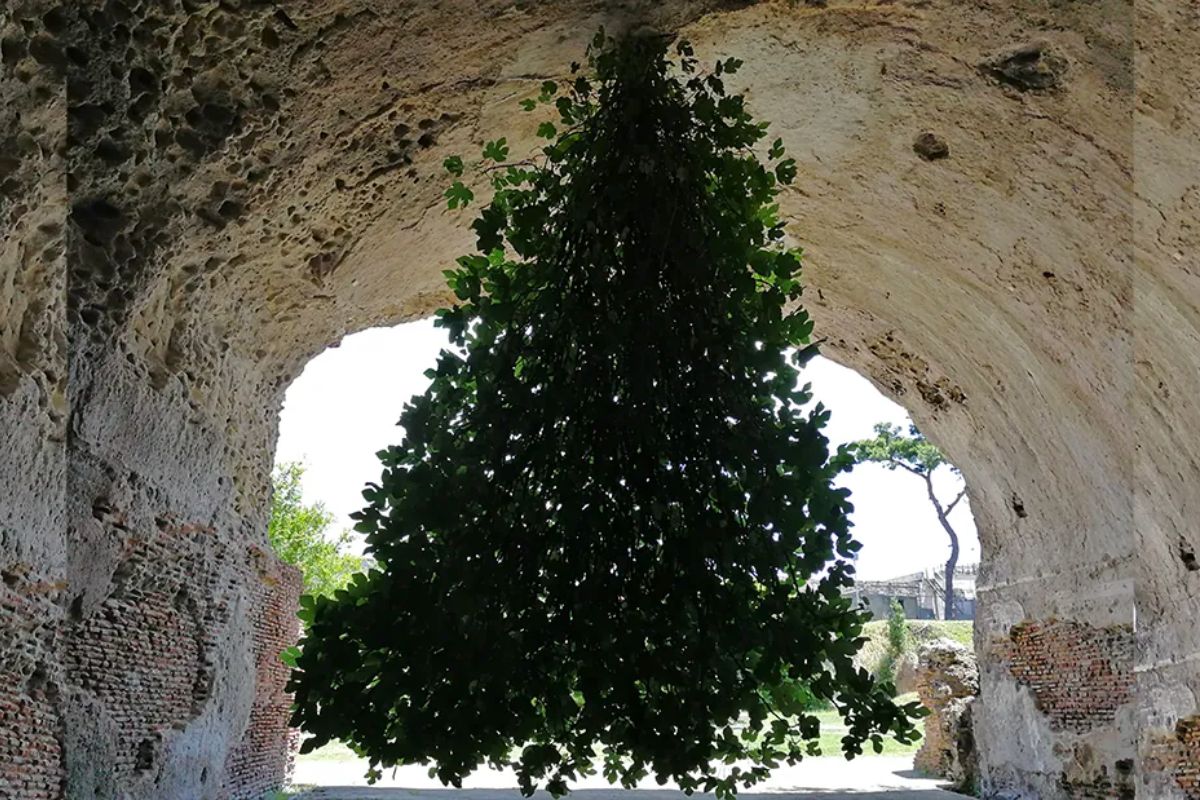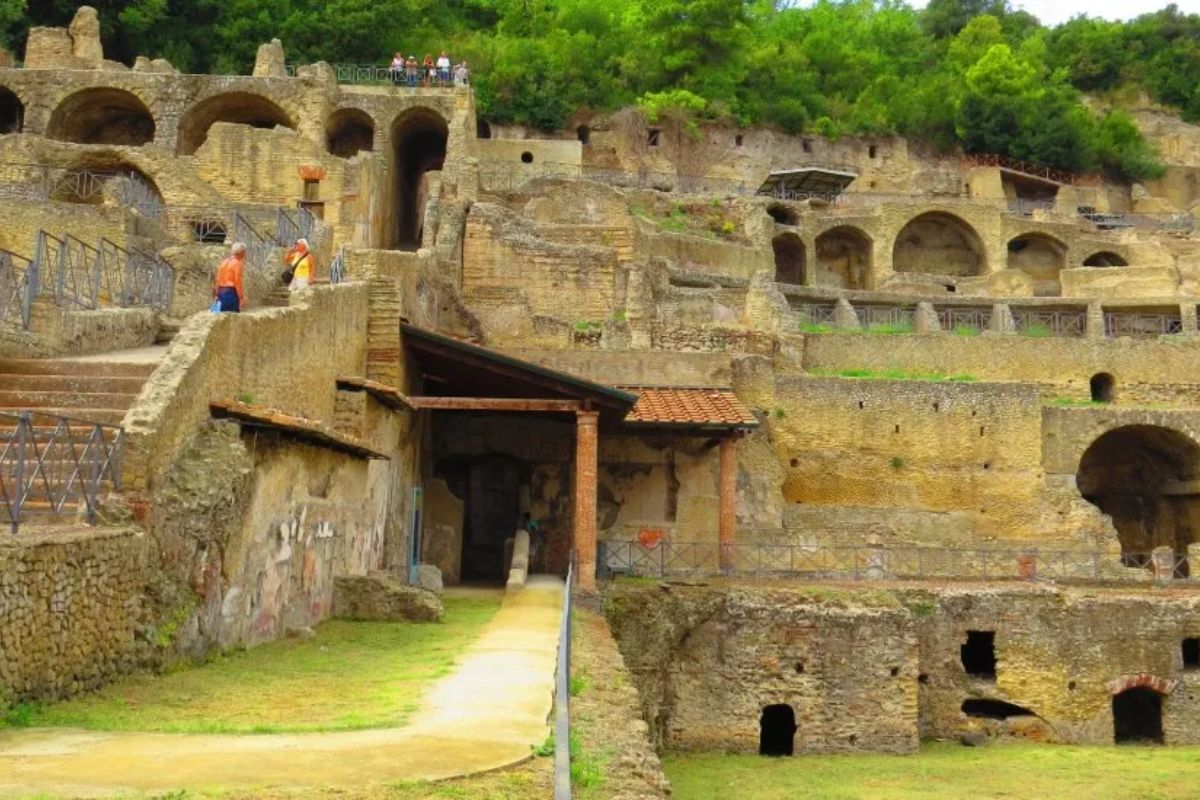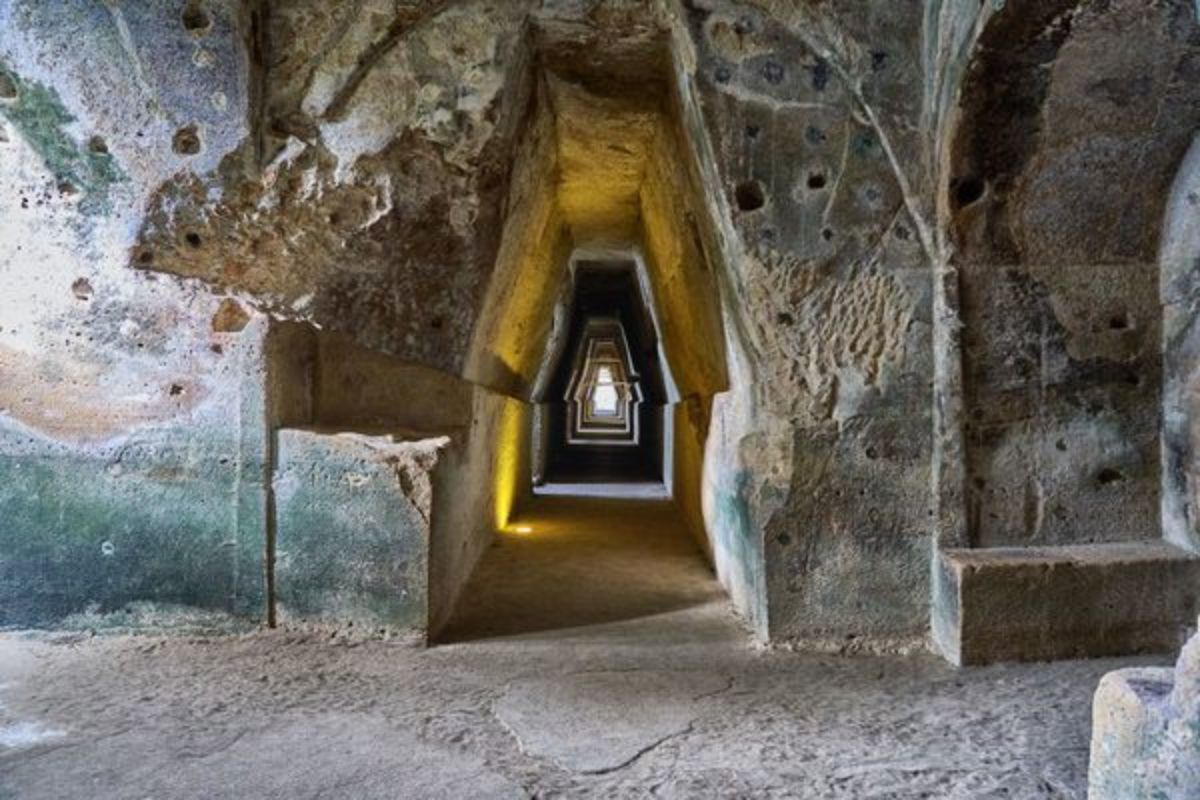In the heart of Naples, Italy, amidst the bustling streets and ancient ruins, lies a botanical marvel that defies logic and imagination: the upside-down fig tree. This curious wonder, nestled within the archaeological park of Baiae, has captured the hearts of locals and tourists alike, becoming a symbol of resilience, adaptability, and the enduring power of nature.

Photo: Lucamato
A Defiance of Gravity: Imagine a fig tree, its roots firmly embedded in the ceiling of an ancient Roman archway, its branches cascading downwards like a verdant waterfall. This is the surreal sight that greets visitors to the upside-down fig tree. The exact origins of this arboreal anomaly remain shrouded in mystery. Some believe a seed sprouted in a crack in the ceiling, while others whisper tales of mischievous birds or even divine intervention.
A Testament to Resilience: Regardless of its origins, the upside-down fig tree’s existence is a testament to the incredible resilience of nature. Growing in an inverted position, deprived of the usual sunlight and nutrients drawn from the earth, this fig tree has defied all odds. Its roots have clawed their way through the stone, seeking sustenance from moisture and minerals within the archway. Its branches, defying gravity, reach towards the sun, their leaves photosynthesizing and producing the sweet figs that occasionally grace the tree.
A Symbol of Hope and Adaptability: The upside-down fig tree serves as a powerful symbol of hope and adaptability. It reminds us that even in the most challenging circumstances, life finds a way. It teaches us to embrace our unique quirks and challenges, to turn obstacles into opportunities, and to persevere against all odds.

Photo: Gianfranco Vitolo
A Journey Through History: The upside-down fig tree is not just a botanical wonder; it is a portal to the past. The ruins of Baiae, where the tree resides, were once a playground for the Roman elite, a place of opulent villas and luxurious baths. Walking amongst these ancient structures, breathing in the same air as emperors and poets, while marveling at the defiant fig tree, is an experience that transcends time and space.
A Beacon for Tourists: The upside-down fig tree has become a beloved tourist attraction, drawing visitors from all corners of the globe. Its quirky charm and historical significance make it a must-see for any traveler seeking an off-the-beaten-path experience. Whether you’re a nature enthusiast, a history buff, or simply someone who appreciates the strange and wonderful, the upside-down fig tree has something to offer everyone.
Beyond the Tree: Exploring the Environs: A visit to the upside-down fig tree is just the beginning of your Neapolitan adventure. The archaeological park of Baiae itself is a treasure trove of ancient Roman ruins, waiting to be explored. Wander through the remains of thermal baths, temples, and villas, each whispering stories of a bygone era. Immerse yourself in the history of this once-thriving resort town, and imagine the lives of the Romans who walked these very grounds centuries ago.

Photo: Atlas Obscura
A Culinary Delight: No trip to Naples is complete without indulging in its world-renowned cuisine. After you explore the ruins and the upside-down fig tree, treat yourself to a delicious pizza, the city’s culinary crown jewel. Savor the flavors of fresh, local ingredients, and experience the warmth and hospitality of Neapolitan culture.
A Memorable Experience: A visit to the upside-down fig tree is not just a sightseeing trip; it’s an experience that will stay with you long after you leave Naples. It is a reminder of the power of nature, the beauty of history, and the importance of embracing the unexpected. So, come explore this quirky wonder, let your imagination run wild, and be inspired by the story of the upside-down fig tree.
The upside-down fig tree is a unique and fascinating attraction that offers a glimpse into the magic and resilience of nature. It is a place to learn about history, to connect with the past, and to be inspired by the power of adaptation. Whether you’re a seasoned traveler or a first-time visitor, the upside-down fig tree is sure to leave a lasting impression and become a cherished memory of your Neapolitan adventure.

Photo: Atlas Obscura

